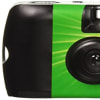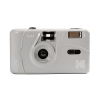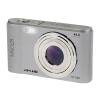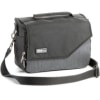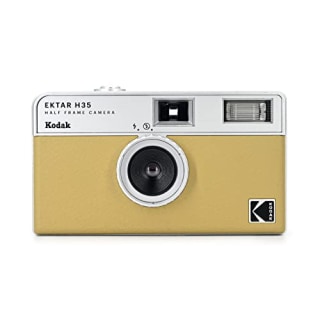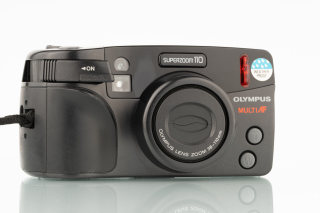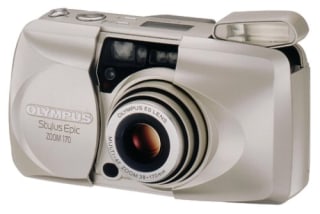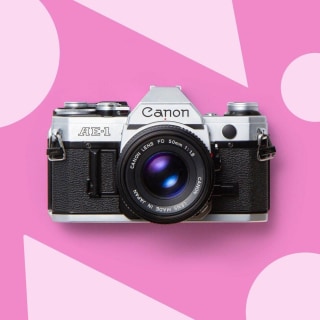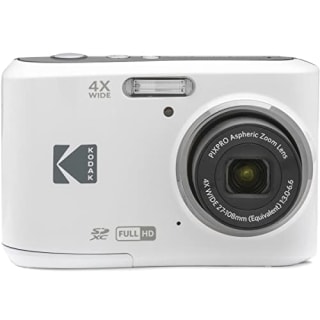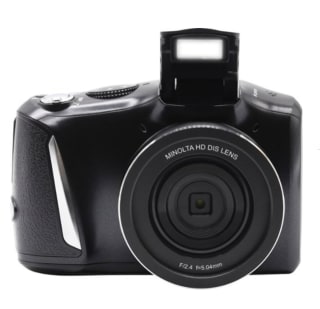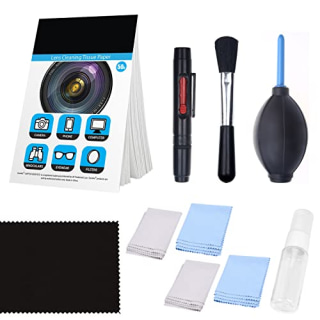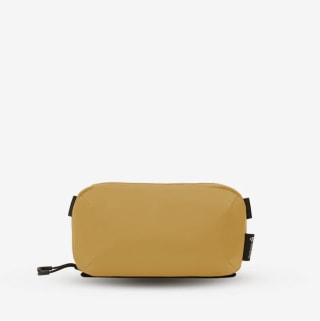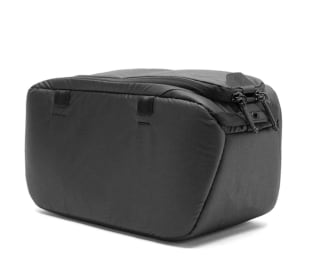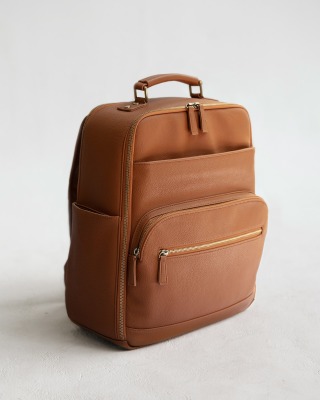First it was scrunchies. Then it was mom jeans. Within the last decade, Polaroid was one of the first cameras Gen Z brought back. Now, film and digital cameras are the next tech gadgets to find themselves in the hands of the younger generation.
Whether your old digital camera from way back when is tucked away in your attic or the Gen Zer in your life is begging you to let them explore and experiment with a film camera, the tips and tricks below can help explain their recent interest, all while helping them properly take care of their new favorite gadget.
Explaining the trend | What is a digital camera? | What is a film camera? | Features to search for | Film cameras to shop | Digital cameras to shop | Camera accessories to shop | How we chose | Meet the experts
Why are film and digital cameras trending?
The '80s and '90s trends have resurfaced in recent years, leaving those who grew up in these decades perplexed as to why younger generations now would want to sport the same accessories and fashion trends that were around when the word "rad" was also popular.
"Thanks to Y2K, being low-tech has become a complete aesthetic in itself," says WGSN trend forecaster Brielle Saggese. "It signals to a simpler time when personal tech wasn’t obligatorily glued to your hand but instead a conscious choice. Today, carrying a digital camera is as much a stylistic piece as a functional one."
Saggese emphasized that online authenticity is an aesthetic in itself, making film and digital cameras more appealing to a younger audience. Popularized by apps such as BeReal, where users are prompted to take a photo at a specific time each day of what they're doing right at that moment, genuineness and legitimacy online has become normalized.
"To get that imperfect or authentic image, they go for blurry, messy or even gritty visuals from an iPhone’s 0.5 selfie, photo dump or BeReal," says Saggese. "The digital camera leans into that. It has this natural grain and grit to it that still screams authentic, but it also adds a layer of personality that most “authentic” iPhone content can’t replicate."
What is a digital camera?
Digital cameras include a number of settings, with users being able to adjust features like lighting and zoom with the turn of a dial. Depending on the SD card inserted, photographers can take anywhere from hundreds to thousands of photos instantly.
"A digital camera gives you an easy way to take large amounts of photos at any time," says New York City-based lifestyle and wedding photographer Anna Duncan. "You can snap, look, delete and redo as many times as you want, which is perfect for high stakes situations like weddings, events or important moments in your life."
Technology advancements have also made it easy to instantly share the photos taken on a digital camera via Bluetooth or adaptors to upload them to your phone or laptop.
"A digital camera allows for freedom in experimentation as it costs nearly nothing to snap more photos," says Emma Allen, senior graphic designer at Bonfire Marketing and Web Co. "We are also able to observe the images as we shoot and make necessary corrections in real time."
What is a film camera?
Film cameras offer a more slow-paced and permanent approach to photography, as you cannot look back at the photos until they're developed and the overall process generally takes more time.
"A defining quality of film is the effortless and genuine look it produces," says Allen. "We can experience a fairly instant sense of nostalgia from developing film simply because of the quality of the images. The editing process on digital images often attempts to emulate this timeless attribute of film."
Reusable film cameras often require that you insert the film roll yourself. Once the film is in the camera, you can begin snapping photos. However, film cameras also require attention to detail and a sense of caution. Simply opening the back flap and exposing the film to light before it's developed can ruin the entire roll.
Features to search for in a digital or film camera
Allen offers a piece of advice to think about that will help narrow your search for a camera:
"When looking to purchase a digital or film camera, you should certainly keep in mind your plan of usage," she says. "If you are hoping to tap into photography as a career, it might make sense to start with a digital camera to explore at a smaller expense, with more control and adaptability as you learn to photograph subjects. If you are hoping to capture daily life experiences in a meaningful way, a film camera is a great route. Point-and-shoot film cameras are often more compact for travel or stuffing into a bag for a night out."
Once you've determined how you plan to use the camera you want to purchase, either for passion projects or to kickstart a new side hustle or career, then you can start to look for specifics features that differentiate each camera.
"For a digital camera, I would look into the range of ISO (how many different lighting scenarios can it handle), battery life and the overall quality of the images (does it take RAW photos or just JPEG, etc.)," says Duncan. "For a film camera, I would look into if you want full control over your settings — which you'll find in a fully manual film camera — or if you want something simple like a point-and-shoot, more similar to a disposable camera."
Buying a camera is often a large purchase, one that many aren't willing to break the bank over or deplete their savings account for. Understandable. A film or digital camera might be sitting unused in your parents' attic, or it's up for grabs at a nearby garage or estate sale.
"A cheaper camera doesn’t always mean cheaper quality — especially film cameras!" says Allen. "There are plenty of secondhand options at thrift stores, flea markets, on the internet or possibly your grandparent's basement. A cheaper digital camera is a great way to learn the basics of photography: composition, manual settings, editing. Once you feel confident in those skills, you could consider upgrading to a professional grade setup."
Once you gain a more comfortable understanding of the kind of photography you want to practice, then you can get more serious about purchasing a more expensive option or additions such as lenses.
"Each camera has its price for a specific reason, but sometimes the quality of a camera exceeds what you may need for your personal use," says Duncan. "While a $4K camera kit is worth what it costs, you may only need an $800 camera to get the quality that you're looking for. Typically, you can get away with an average camera body and a nicer lens and get a great effect for taking day-to-day photos!"
Film cameras to shop
Back to the basics: Fujifilm QuickSnap Flash 400 One-Time-Use Camera
- Classic design
- No settings necessary
- Disposable
Film format type: 35mm | Shutter speed: 1/140
If you grew up using this classic disposable camera on the regular, then you're probably familiar with how it works. This simple-to-operated Fujifilm has been a longtime classic for anyone hoping to snap photos without the hassle of sorting through settings. Like many other film options, this one has a built-in flash for convenience.
Budget-friendly photos: Kodak M35 Reusable M35 35mm Film Camera
- Good value for price
- Easy to use
- Limited settings
Film format type: 35mm | Shutter speed: 1/120
For under $20, this reusable, easy-to-use Kodak is perfect for film fans who don't want to spend a ton of money on a camera. It features an automatic focus and build-in flash capabilities. Plus, it's offered in seven colors, all of which are the perfect size to bring with you on your next trip for memories on the go.
Perfect for beginners: Kodak Ektar H3 Film Camera
- Allows for over 70 photos with each roll of film
- Compact, "perfect travel companion"
- Scratches easily
Film format type: 35mm | Shutter speed: 1/100
Another affordable option, this camera takes half-film photos, meaning that on a roll of 36 exposures, you'll end up with 72. Available in four different colors, this point-and-shoot film camera is "an excellent camera for the price and if you want an alternative to disposables," said one reviewer, adding that "It's really easy to just pass the camera to a friend who is inexperienced with this camera, as it's pretty much wind, point and shoot."
Starting out small: Olympus Superzoom 110 Point and Shoot Film Camera
- Produces vintage-like results
- Can alter settings on your own
- Hard to find
- Might sell out at retailers
Film format type: 35mm | Shutter speed: N/A
Victoria Bloomquist, a Midwest-based photographer, enjoyed the results and vintage-like settings of this camera so much, she used it to capture memories during her wedding day.
"[It's a] really great starter, automatic, you can change the shutter speed and set everything else to be automatic, [and it's] nice if you don’t really want to bother with learning much about film but still want the nostalgic vibes that film brings," she says.
Small but mighty snapshots: Olympus Stylus Epic Zoom 35mm Film Camera
- Has great quality flash
- Package and delivery issues
- Instruction manual is unclear
Film format type: 35mm | Shutter speed: N/A
Film photographer Rachel Blank calls this her "all-time favorite point and shoot!" adding that it's small but mighty and able to "produce such beautiful and colorful images."
It's compact, meaning you can pack it for vacations or stuff it in a small clutch for a night out with friends. The brand calls out its all-weather exterior, promising a resistant camera, despite if it gets dropped or mishandled.
"Made me fall in love with photography": Canon AE-1 35mm Film Camera
- Compact
- Retro-inspired look
- Have to purchase second-hand
File format type: 35mm | Shutter speed: Offers one shutter mode, named "Shutter Priority"
Bloomquist admits that getting started with film photography can be frustrating at first, but is easy to learn if you have the right camera.
"This was the first film camera I used, and is what made me fall in love with film photography," she says. "It has a simple 35mm lens on it and has done everything I’ve wanted it to!"
This vintage-inspired camera is easy to use according to Bloomquist, because you're able to alter and change the settings yourself rather than having one fixed setting (like most film cameras).
Digital cameras to shop
Easy-to-use settings: Kodak PIXPRO Friendly Zoom FZ45 Digital Camera
- Easy learning curve
- Affordable
- Provided batteries die quick
# of megapixels: 16 | # of digital zoom: 4x | Video capabilities: Yes | Screen: 2.7 inches
An affordable, basic option that reviewers say is beginner-friendly thanks to its easy to navigate features, this camera is no-frills when it comes to its photo capturing abilities.
With a 4x zoom and the ability to capture video, this camera perfectly encapsulates the needs of a bussing photographer, as Allen points out you want to focus on control and adaptability when just starting out.
A lightweight option: Minolta MND20-S HD Digital Camera
- Compact
- Little to no learning curve
- Charge doesn't last long
- Transferring takes a long time
# of megapixels: 48 | # of digital zoom: 16x | Video capabilities: Yes | Screen: 2.9 inches
Allen likes point-and-shoot cameras for their ability to travel well, and this beginner-friendly option is compact and can fit in a sizable pocket or purse.
This camera is available in five colors and weighs less than a pound, promising to not make any carry-on or checked bag go over the weight limit.
Large, simple-to-view screen: Kinoca Minolta MND50 Megapixel Digital Camera
- Takes great-quality photos
- Affordable compared to other options
- Difficult transfer process
- Settings and set-up process are tricky to navigate
# of megapixels: 48 | # of digital zoom: 16x | Video capabilities: Yes | Screen: 3 inches
Capture both video and photos in a number of different settings including panoramic photos, photo burst and macro mode, which helps to focus add clarity to your photos. In addition, capture videos in either time-lapse or slow motion settings.
Camera accessories to shop
Professional Camera Cleaning Kit
This cleaning kit includes everything you need and more, including a lens cleaning pen, microfiber towels, a reusable spray bottle, an air blower and a lens cleaning brush. Better yet, it's only $10!
Wandrd Tech Bag
With options to purchase a small, medium or large bag depending on how big your camera is, this one zips open to reveal three pouches. Perfect for storing a charger, your camera and film, this bag makes it easy to grab and pack this case for any adventure.
B&H Photo Think Tank Camera Bag
With dividers and included pouches, store everything you need for capturing photos in this smaller camera case. Included with this camera case is its own rain pouch, adding an extra layer of protection for your gadgets.
Peak Design Camera Cube
This affordable camera pouch includes dividers in the main pouch to separate lenses from cameras and accessories. In addition, zipper pouches are incorporated into the top flap, as a way to utilize space in a smaller camera case. Reviewers love this product because it's "simple, safe" and "reliable."
Kamrette The Lyra Camera Backpack
Professional photographer, Kamron Korsmo, adores this vegan leather and canvas blend backpack for carting his cameras, calling it the "most efficient" and "stylish" one he owns.
"When traveling, people will stop me and ask me where I bought my backpack, and little do they know that I am carrying up to three cameras, three lenses, my flash and all of my accessories in one," he says of this spacious bag.
How we chose
The Shop TODAY editors and writers search the internet to find the best products out there. We interviewed professional photographers to gain insight into the cameras they use on a regular basis, as well as the advice they have for those hoping to hone their craft and capture memories.
As an editorial team, we independently create content and determine coverage based on research, reporting and what we think TODAY.com readers would like to read about. The goal of our content is to provide a service and inform readers who are on the hunt for the latest products to help make their life better. Items are sold by retailer, not TODAY. Pricing and availability are accurate as of publish time. Learn more about Shop TODAY.
Meet the experts
- Anna Duncan is a lifestyle and wedding photographer based in New York City. While her husband, Ben, joined her business in 2020, Anna has been photographing since 2014 and has done so in 15 states and two countries. Anna uses multiple mediums to capture clients most cherished days.
- Brielle Saggese is a trend forecaster at WGSN, with an emphasis in youth culture, well-being and identity.
- Emma Allen is a senior graphic designer at Bonfire Marketing and Web Co., who has experience photographing different subjects, including Iowa State Athletics and passion projects, such as senior photos. Her work spans across and involves brand identity, illustrations, print collateral and photography.
- Kamron Korsmo is both a professional photographer and a nurse, specializing in senior sessions, engagement photo shoots, wedding day photography and more.
- Rachel Blank is a film photographer based in Utah focusing on 3mm and 120mm film photography.
- Victoria Bloomquist is a photographer based in Minneapolis focusing on 35mm, digital- and documentary-style photography.


